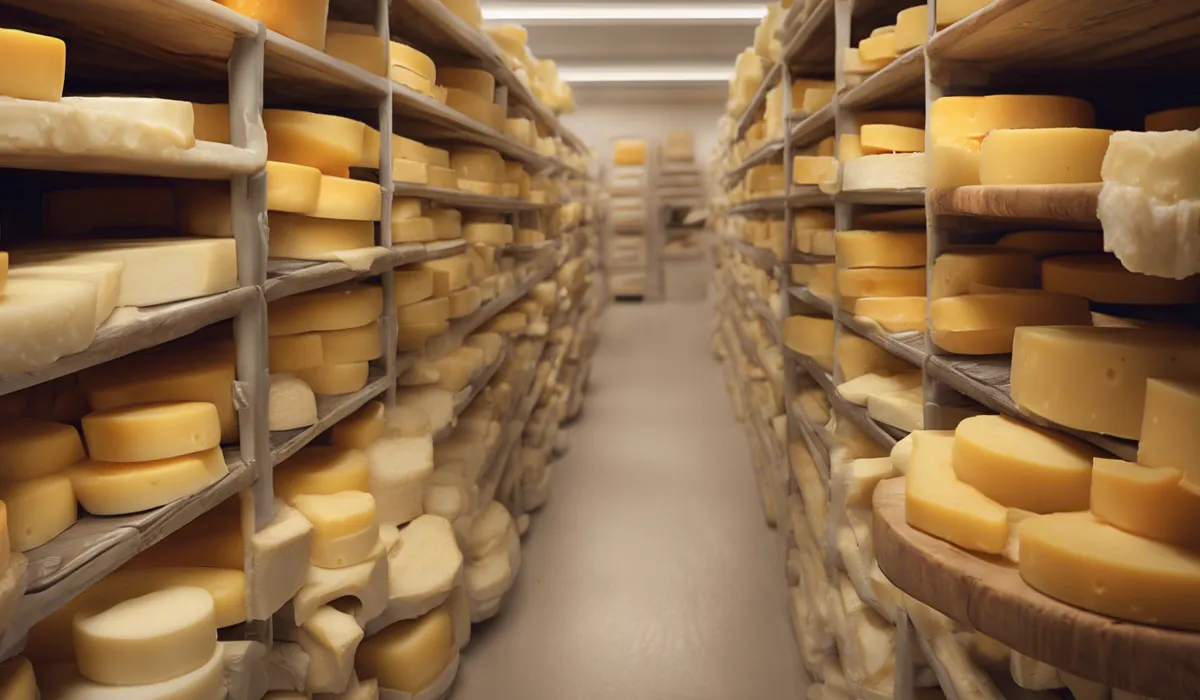To store cheese and prevent mold, wrap it in wax paper, parchment, or cheese paper, allowing it to breathe. Store in the warmest part of the fridge, like a vegetable compartment. Avoid plastic wrap directly on cheese, as it promotes moisture and mold growth.
Understanding Cheese Mold

What Is Mold and Its Impact on Cheese
Mold is a type of fungus that thrives in various environments, especially where it is moist and warm.
It reproduces through spores that travel through the air, landing on surfaces like cheese. Mold affects cheese by breaking down its components, which can cause spoilage and sometimes produce toxins.
Common Types of Cheese Mold
Some molds on cheese are intentional, such as Penicillium roqueforti for blue cheese. Unwanted molds might include Penicillium spp. or Aspergillus spp., which can spoil the cheese.
Factors Contributing to Mold Growth
Moisture, temperature, and air circulation are crucial in mold growth. Moist environments promote mold, while temperatures between 40°F and 140°F (known as the danger zone) are ideal for mold proliferation.
Proper air circulation can help prevent mold by keeping the environment dry.
Harmless vs. Harmful Cheese Mold
Not all molds are harmful. White molds on brie are safe to eat, while mold with a foul odor or unusual color (like pink or green) can be harmful and should lead to discarding the cheese.
Proper Cheese Storage Techniques

Optimal Cheese Storage Temperatures
Different cheeses require different temperatures for optimal storage. Soft cheeses do well just under 40°F, while hard cheeses can be stored at slightly higher temperatures.
Humidity Control Is Key
Controlling humidity is vital in preventing mold. Cheese should be stored in a part of the refrigerator where humidity is moderate to prevent drying out and cracking.
Effective Ways to Wrap Cheese
Wrapping cheese properly is essential. Use wax paper, parchment, or cheese paper to allow the cheese to breathe, avoiding direct contact with plastic wrap.
Containers: To Seal or Not to Seal
Whether to use airtight containers depends on the type of cheese. Hard cheeses can be stored in airtight containers, while soft cheeses benefit from containers that allow for some air exchange.
Refrigerator Location Matters
Store cheese in the warmest part of the fridge, such as the vegetable compartment, to prevent it from becoming too cold and losing flavor and texture.
Specialized Cheese Storage
Products like cheese vaults and cheese bags can provide the optimal environment for storing various types of cheese, balancing moisture and air circulation.
Maintenance and Care for Stored Cheese

Inspecting Cheese Regularly
Regularly check your cheese for any signs of mold. Early detection means you can save the cheese by removing the moldy part before it spreads.
Dealing with Mold on Cheese
If you find mold on cheese, cut off at least an inch around and below the moldy spot. Ensure the knife does not touch the mold to avoid contamination.
Cheese Rotation and Consumption
Consume cheese within its shelf life. Rotate your cheese stock by placing new purchases behind older ones to ensure older cheese is used first.
Cleaning Your Cheese Storage
Keep your storage containers and areas clean. Regularly wash and dry containers to prevent mold spores from accumulating.
Freezing Cheese for Longevity
Freezing cheese can prolong its life, but be aware that it can change the texture and flavor of some cheeses. Hard cheeses freeze better than soft ones.
FAQs About Storing Cheese to Prevent Mold
What is the best material to wrap cheese in to prevent mold?
To prevent mold, cheese should be wrapped in wax paper, parchment, or cheese paper which allows the cheese to breathe.
What is the ideal part of the fridge to store cheese?
Cheese should be stored in the warmest part of the fridge, such as the vegetable compartment, to prevent mold.
Why should cheese not be wrapped in plastic wrap?
Plastic wrap should be avoided because it promotes moisture and mold growth by not allowing the cheese to breathe.
Can cheese be stored in an airtight container?
Cheese can be stored in an airtight container as long as it is first wrapped in a breathable material such as wax paper, parchment, or cheese paper.
How can I prevent cheese from drying out while preventing mold?
Wrap cheese in a material that allows it to breathe, like wax paper, and store it in the warmest part of the fridge to balance moisture and prevent both drying out and mold.
Final Thoughts
To effectively store cheese and prevent mold, it should be wrapped in breathable materials such as wax paper, parchment, or cheese paper.
The best location for cheese is in the warmest area of the refrigerator, such as the vegetable drawer.
It is critical to avoid using plastic wrap directly on the cheese, as this can trap moisture and encourage mold.
